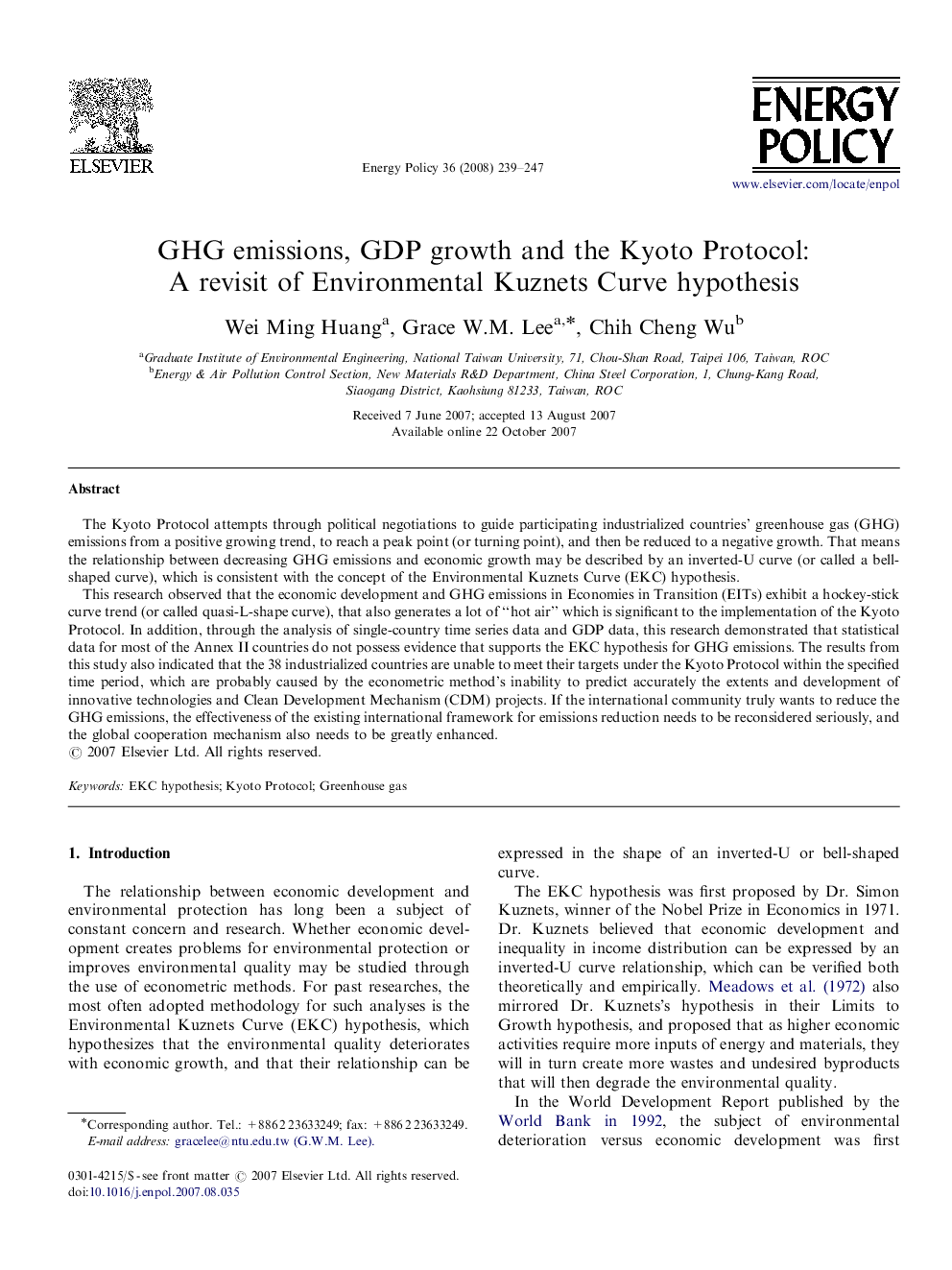| Article ID | Journal | Published Year | Pages | File Type |
|---|---|---|---|---|
| 996484 | Energy Policy | 2008 | 9 Pages |
The Kyoto Protocol attempts through political negotiations to guide participating industrialized countries’ greenhouse gas (GHG) emissions from a positive growing trend, to reach a peak point (or turning point), and then be reduced to a negative growth. That means the relationship between decreasing GHG emissions and economic growth may be described by an inverted-U curve (or called a bell-shaped curve), which is consistent with the concept of the Environmental Kuznets Curve (EKC) hypothesis.This research observed that the economic development and GHG emissions in Economies in Transition (EITs) exhibit a hockey-stick curve trend (or called quasi-L-shape curve), that also generates a lot of “hot air” which is significant to the implementation of the Kyoto Protocol. In addition, through the analysis of single-country time series data and GDP data, this research demonstrated that statistical data for most of the Annex II countries do not possess evidence that supports the EKC hypothesis for GHG emissions. The results from this study also indicated that the 38 industrialized countries are unable to meet their targets under the Kyoto Protocol within the specified time period, which are probably caused by the econometric method's inability to predict accurately the extents and development of innovative technologies and Clean Development Mechanism (CDM) projects. If the international community truly wants to reduce the GHG emissions, the effectiveness of the existing international framework for emissions reduction needs to be reconsidered seriously, and the global cooperation mechanism also needs to be greatly enhanced.
